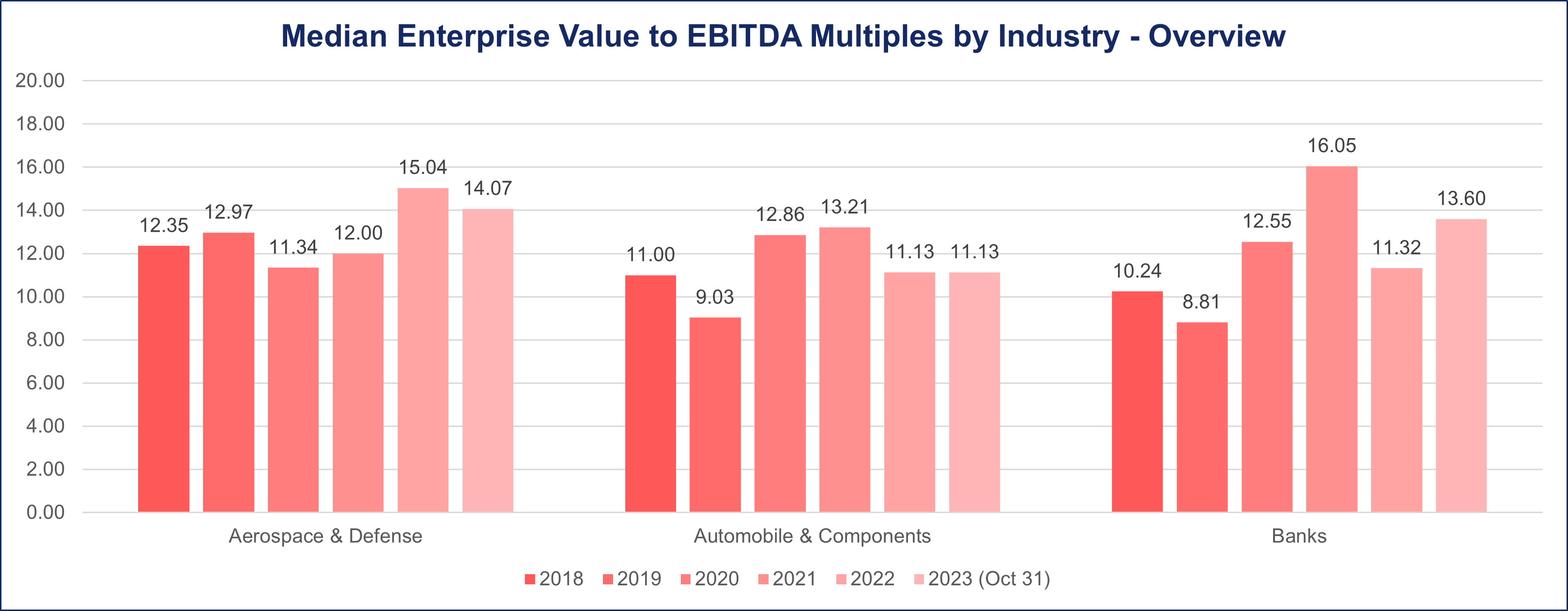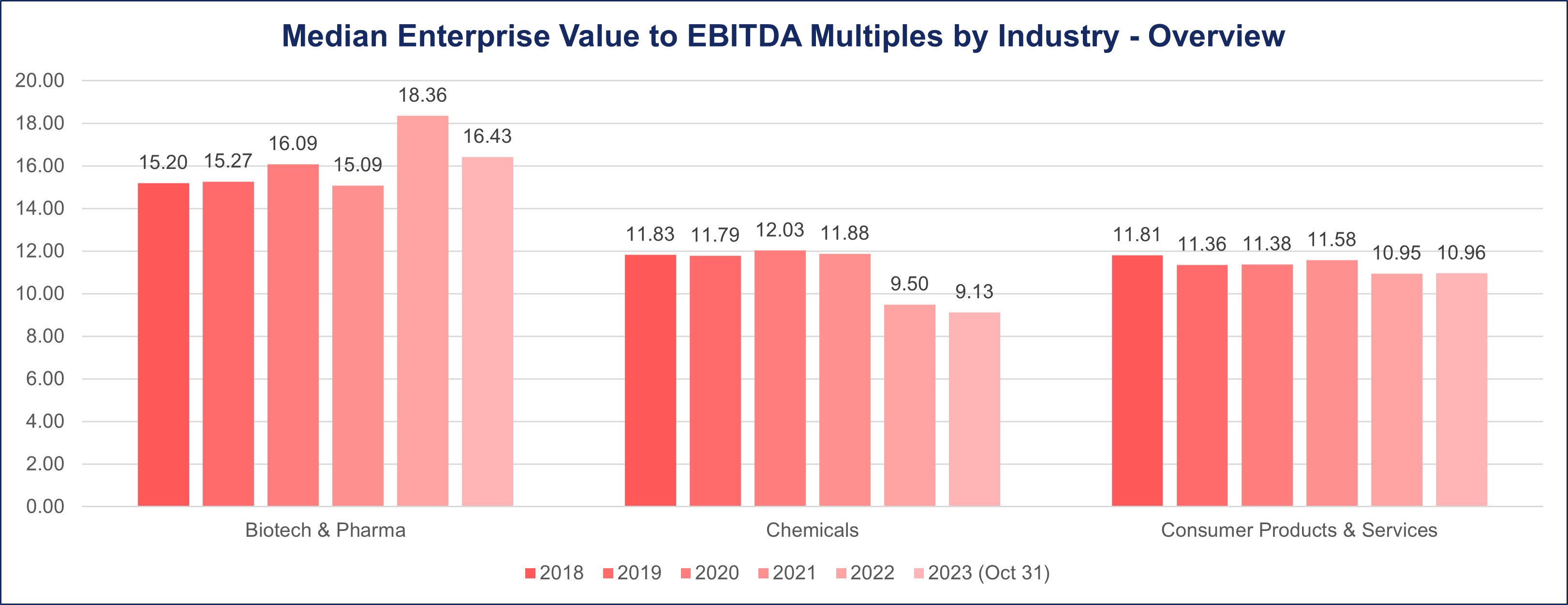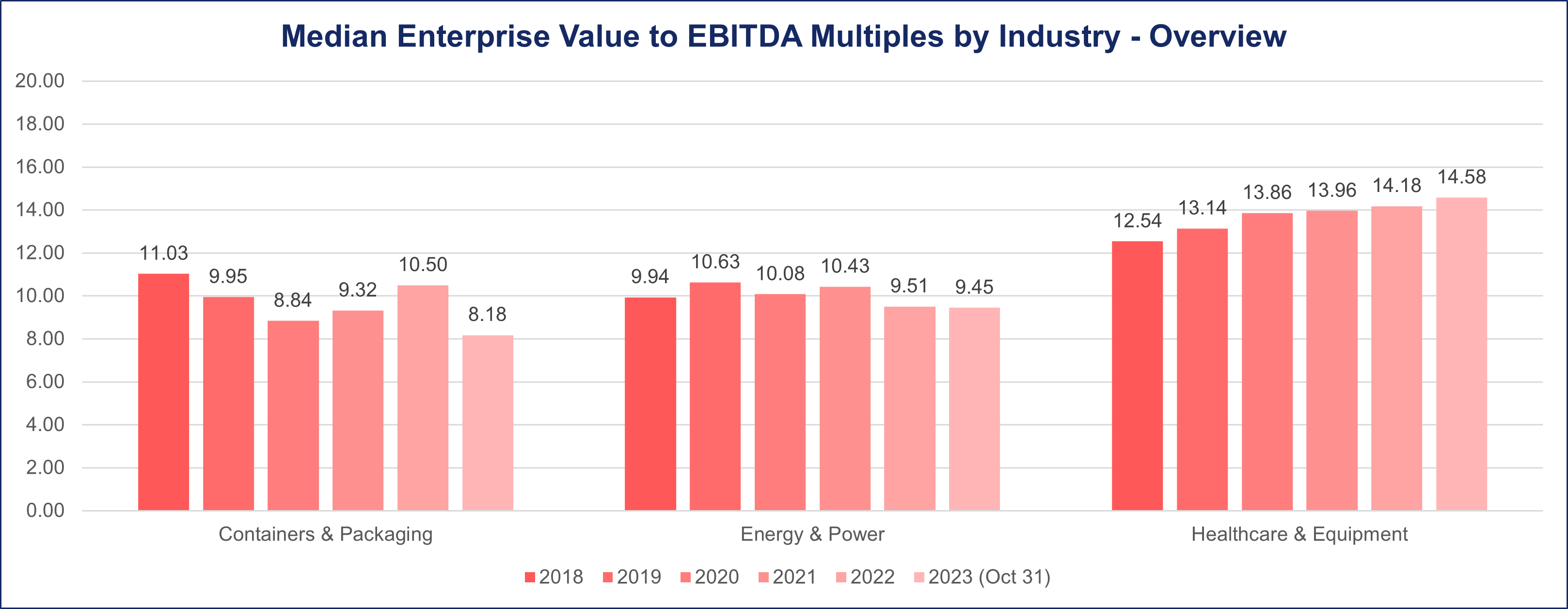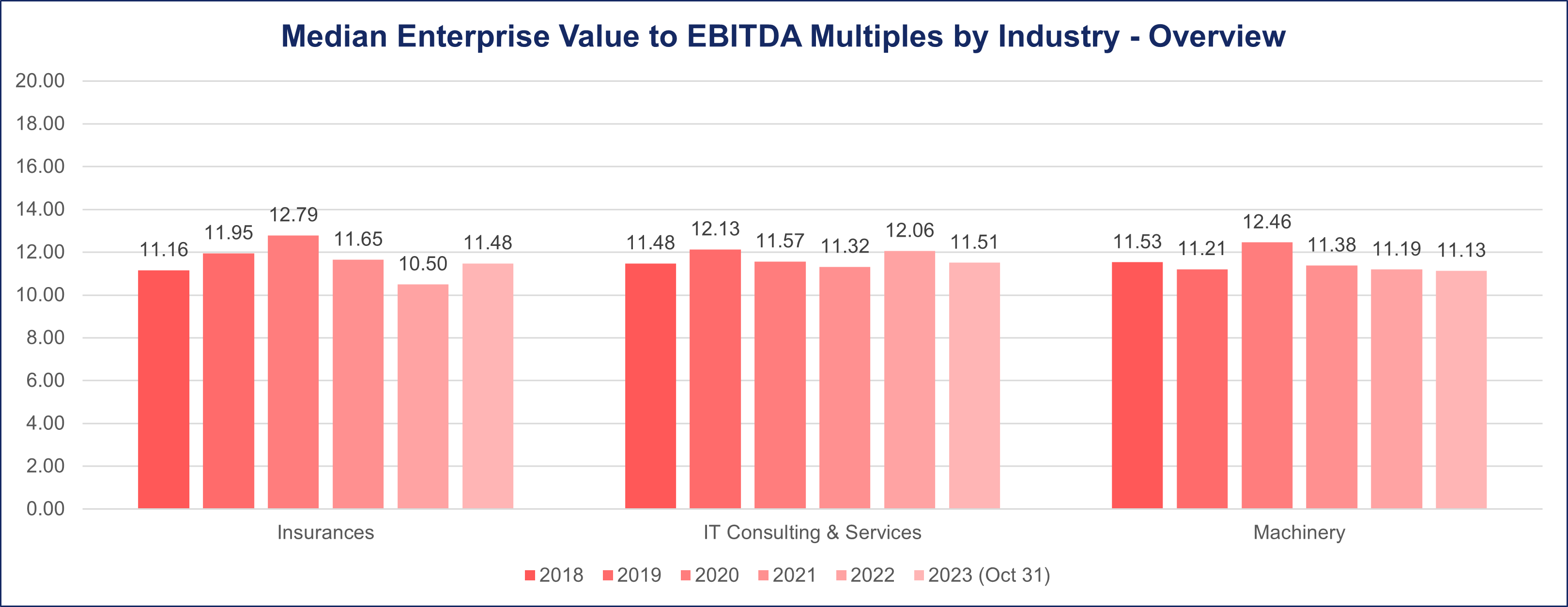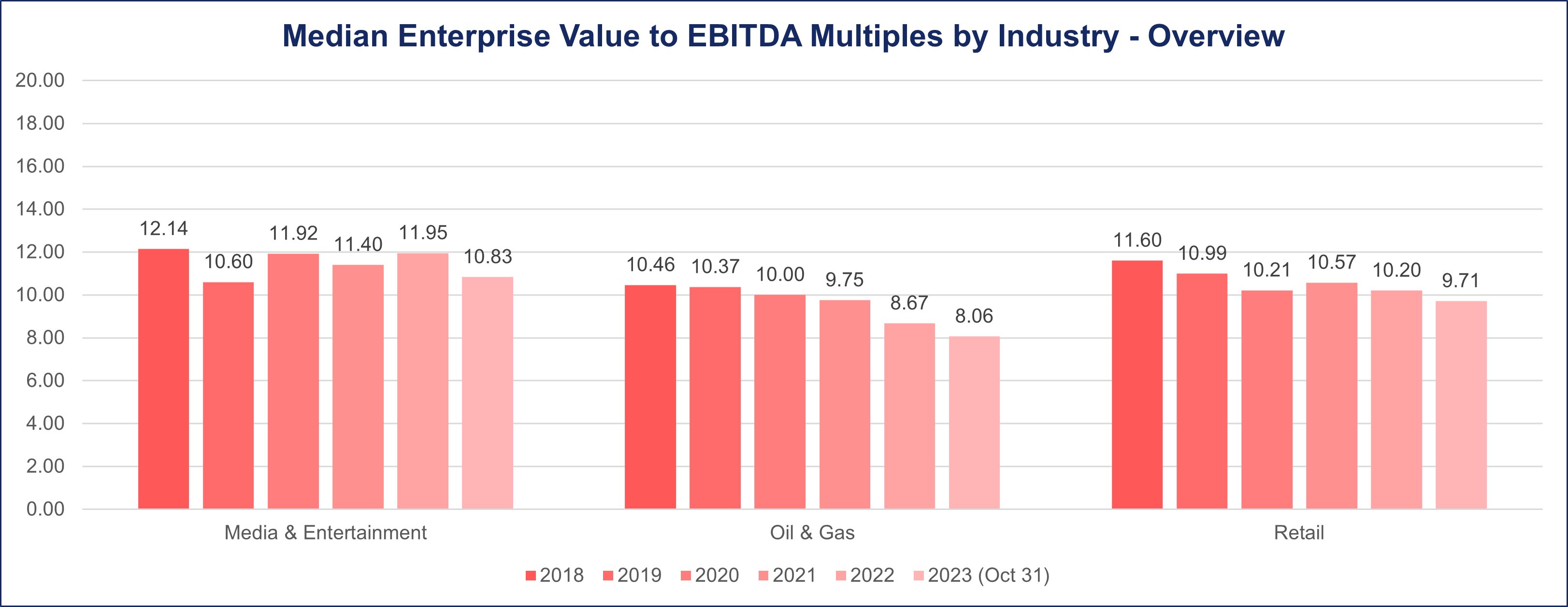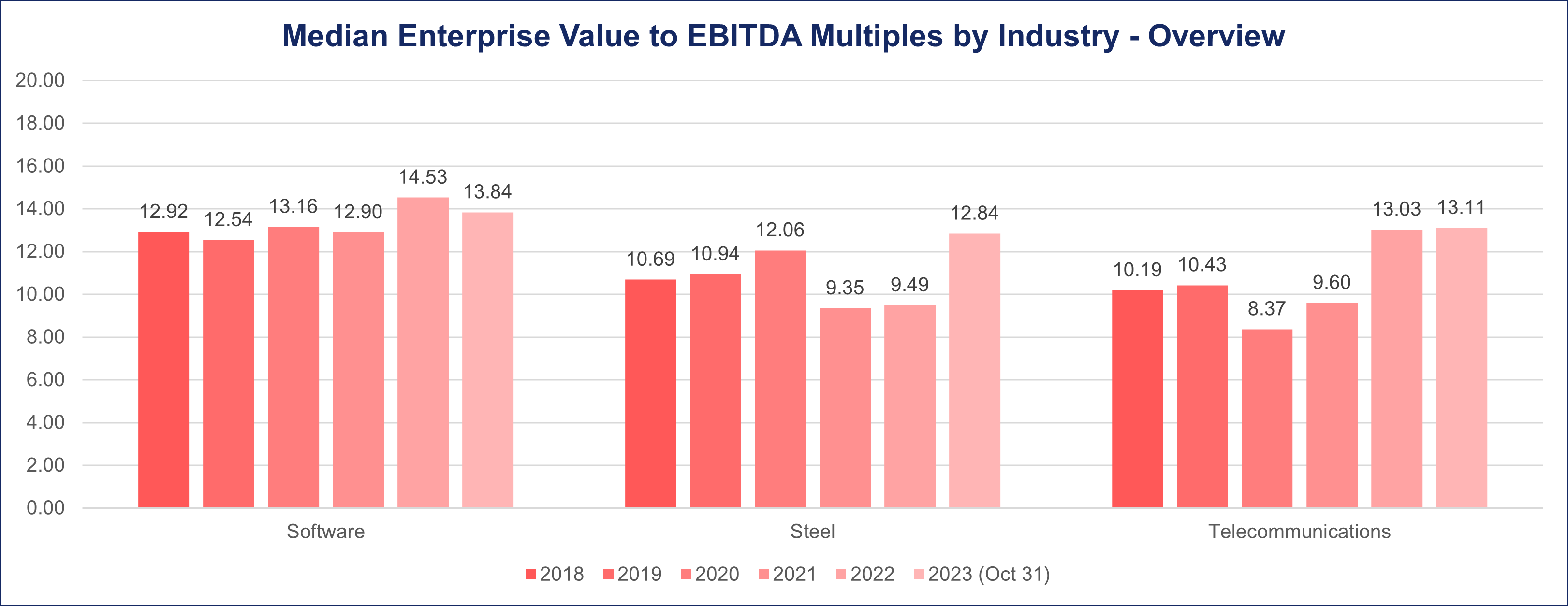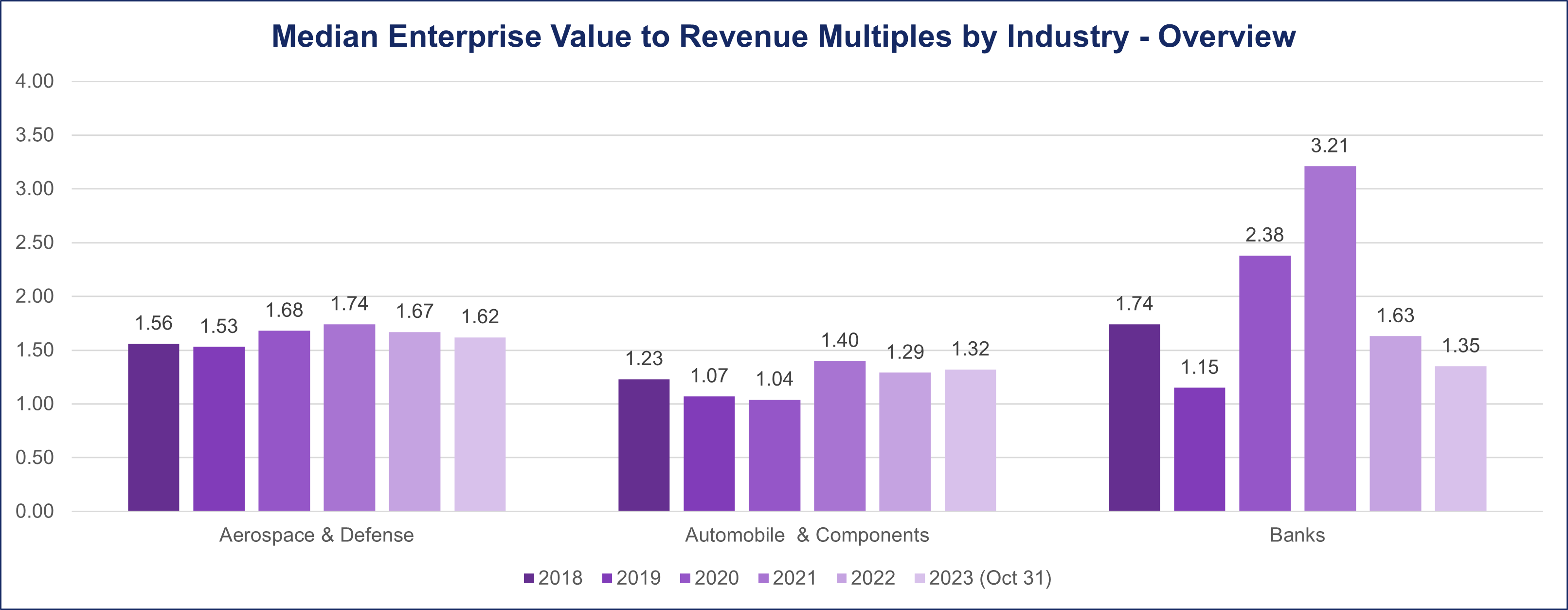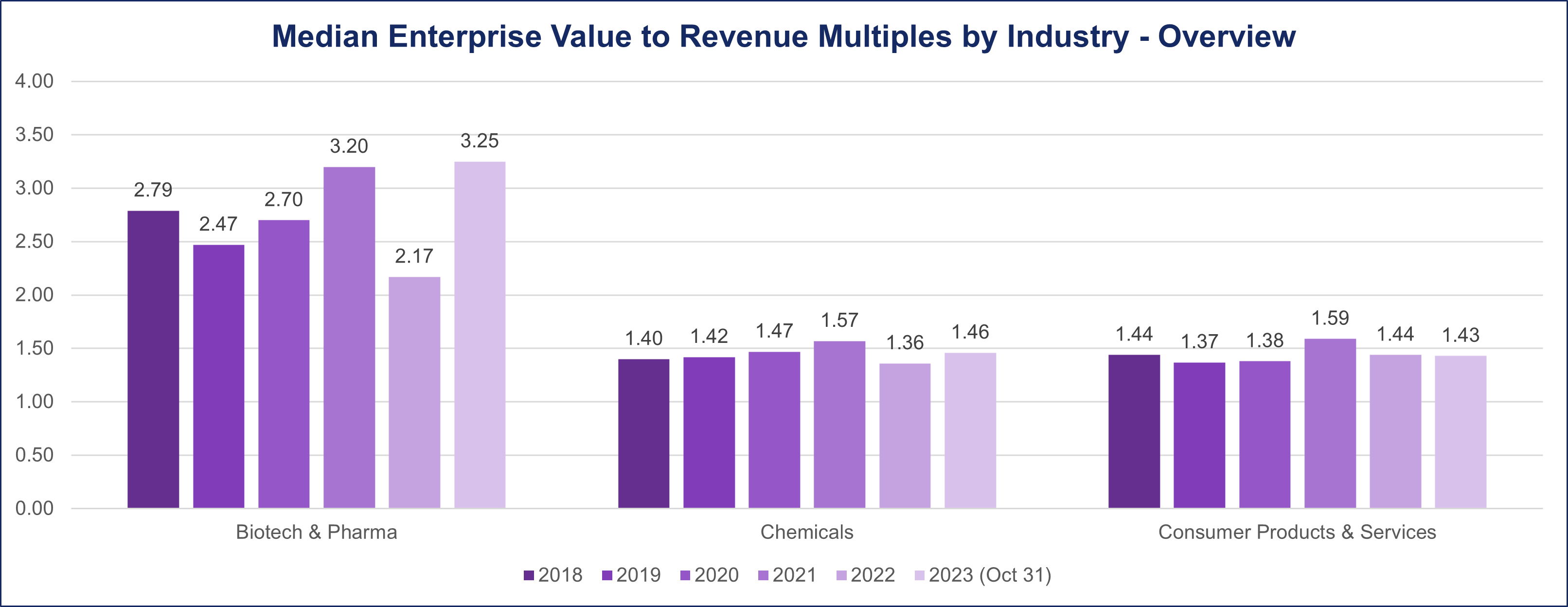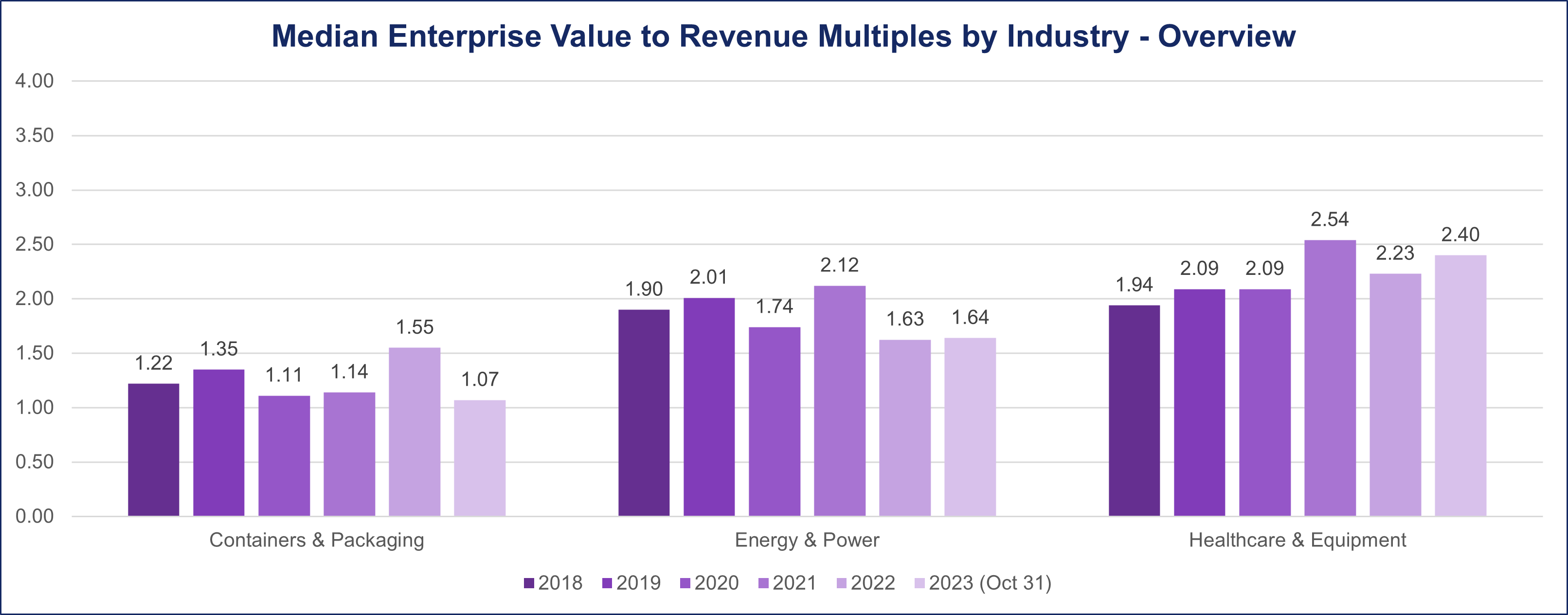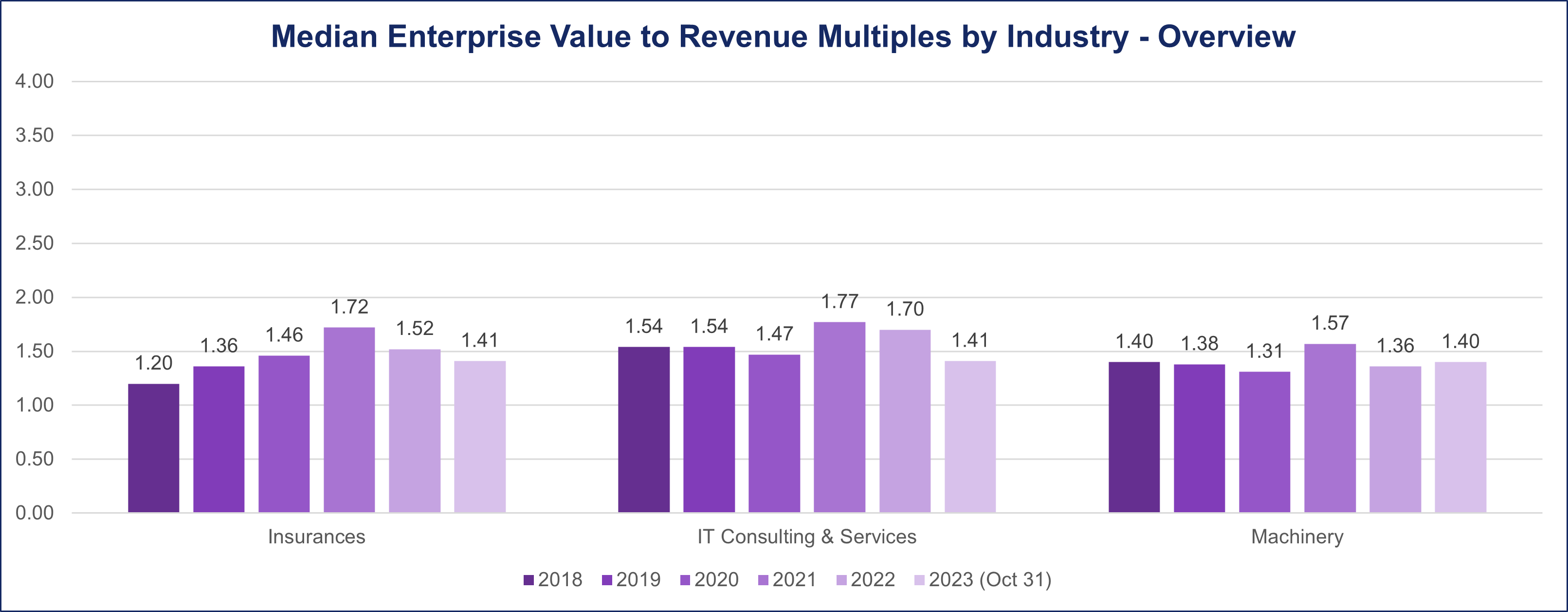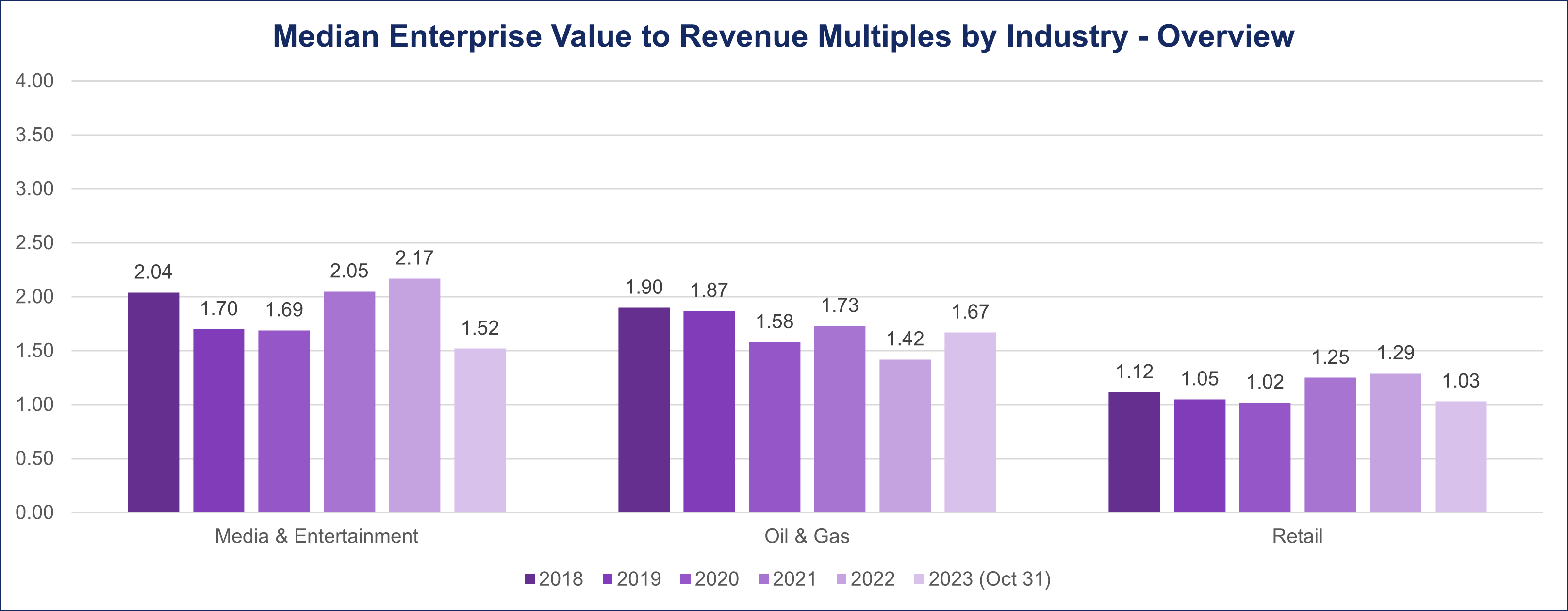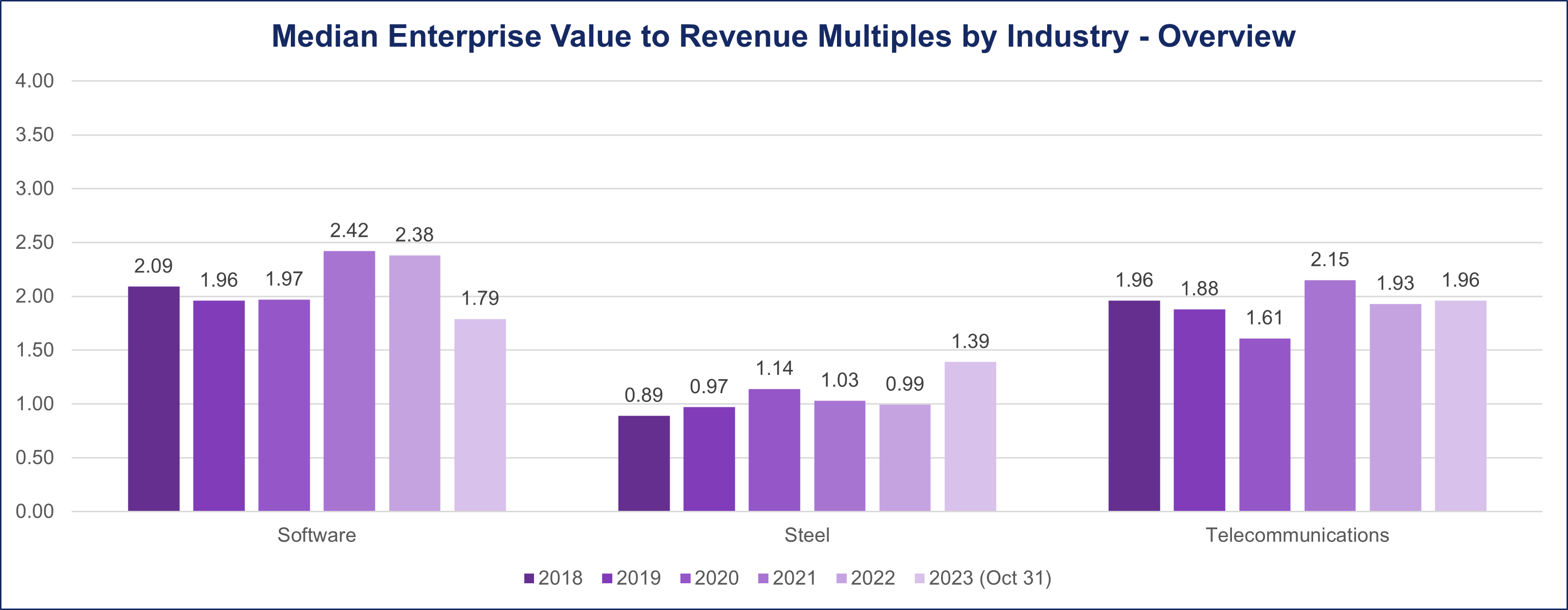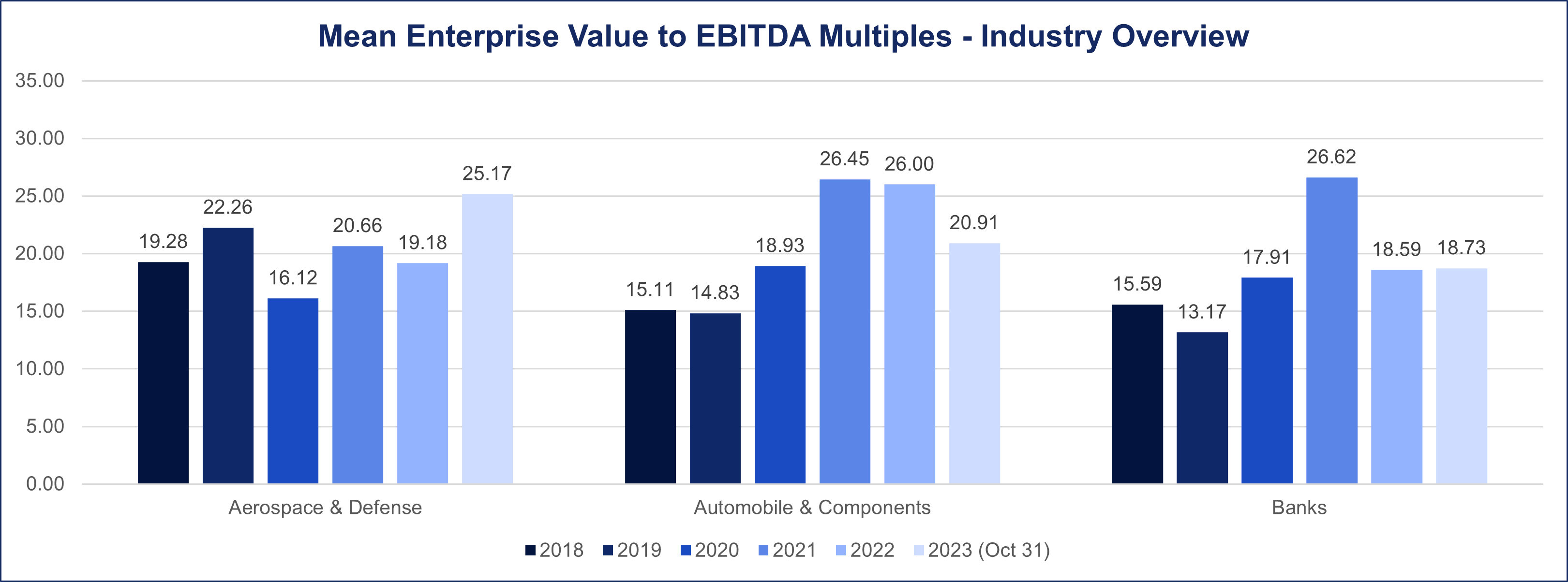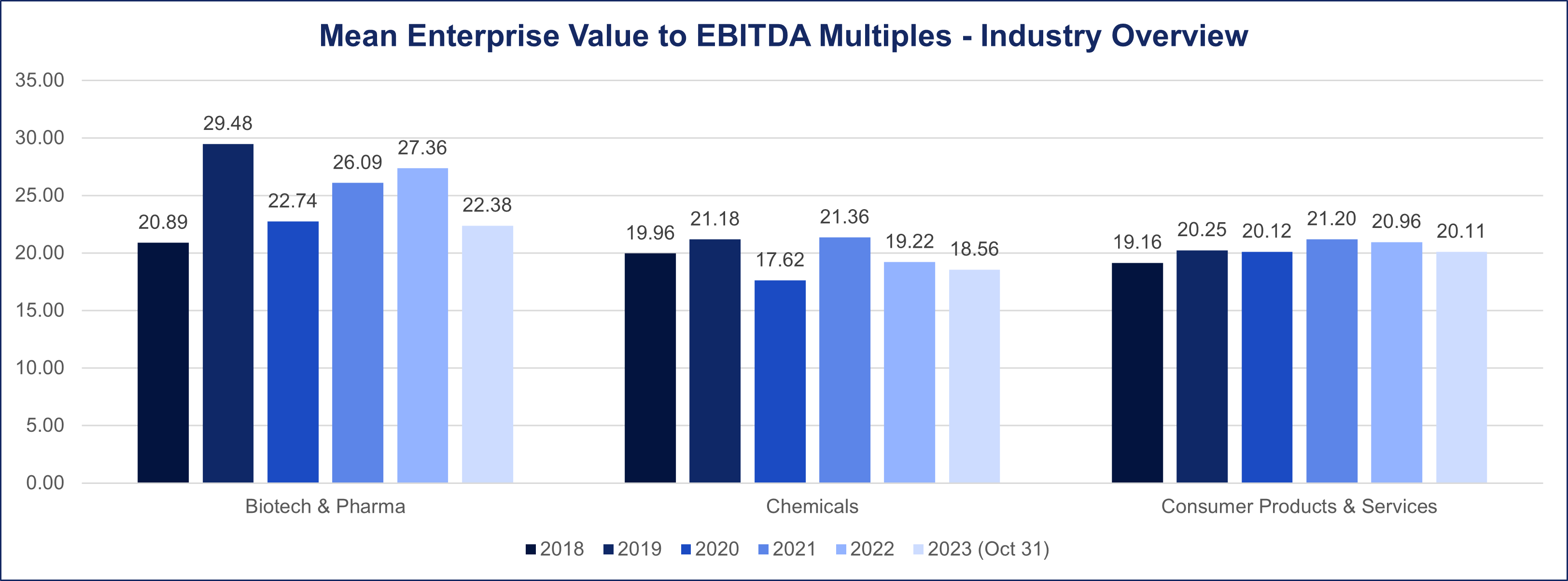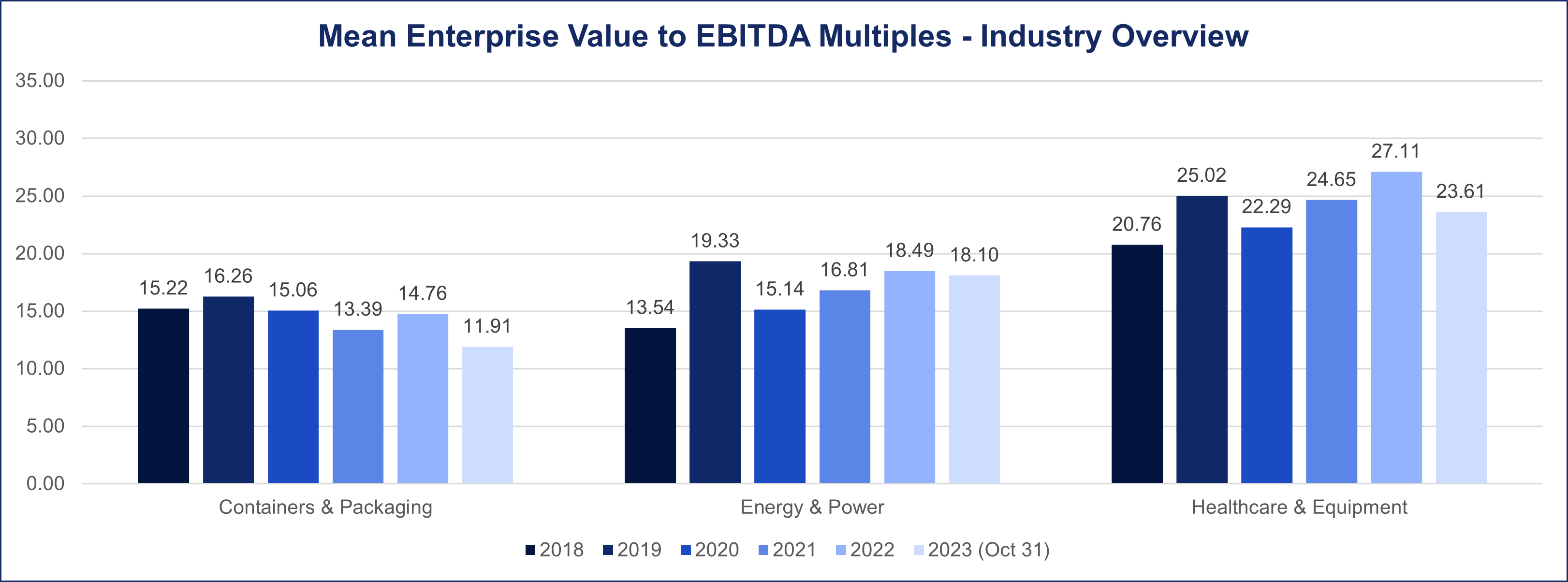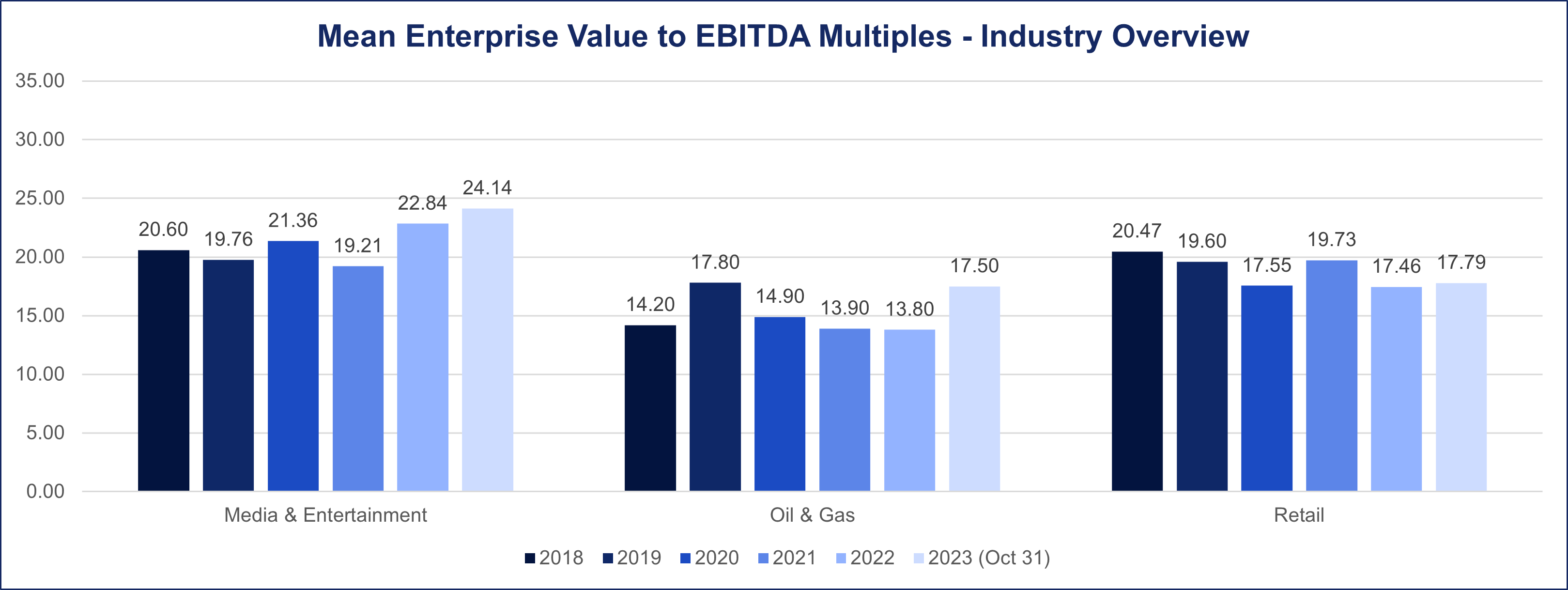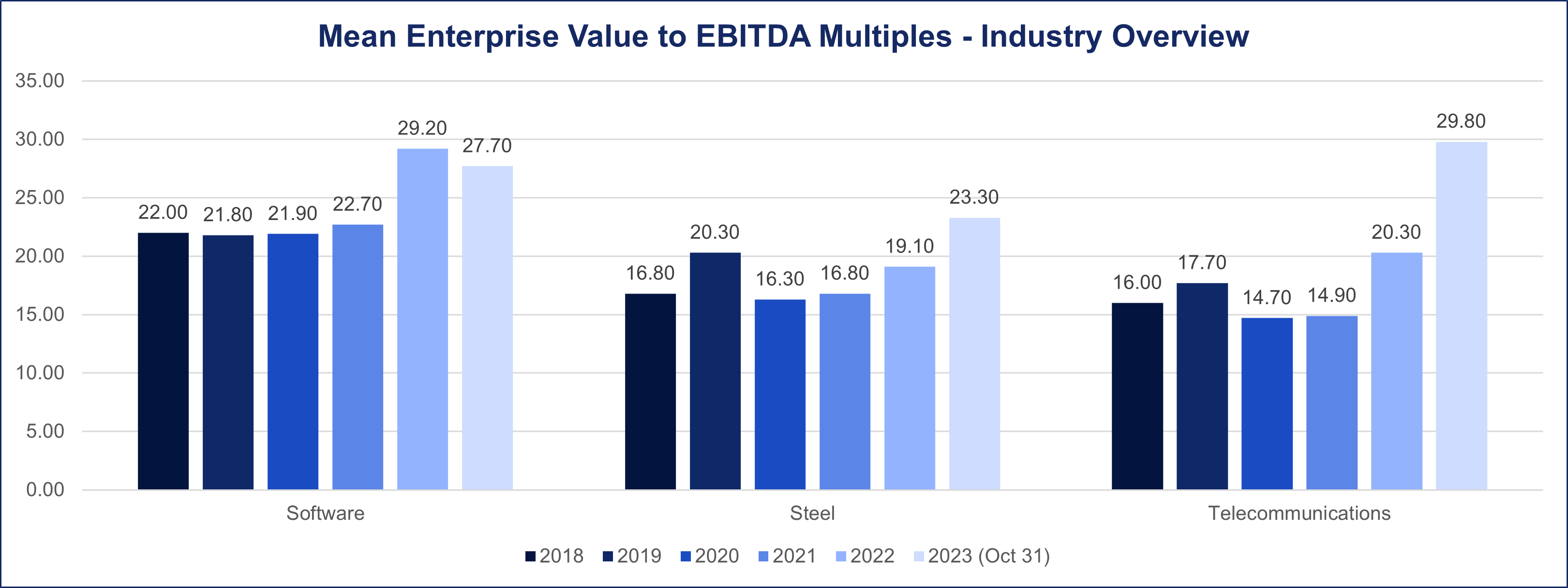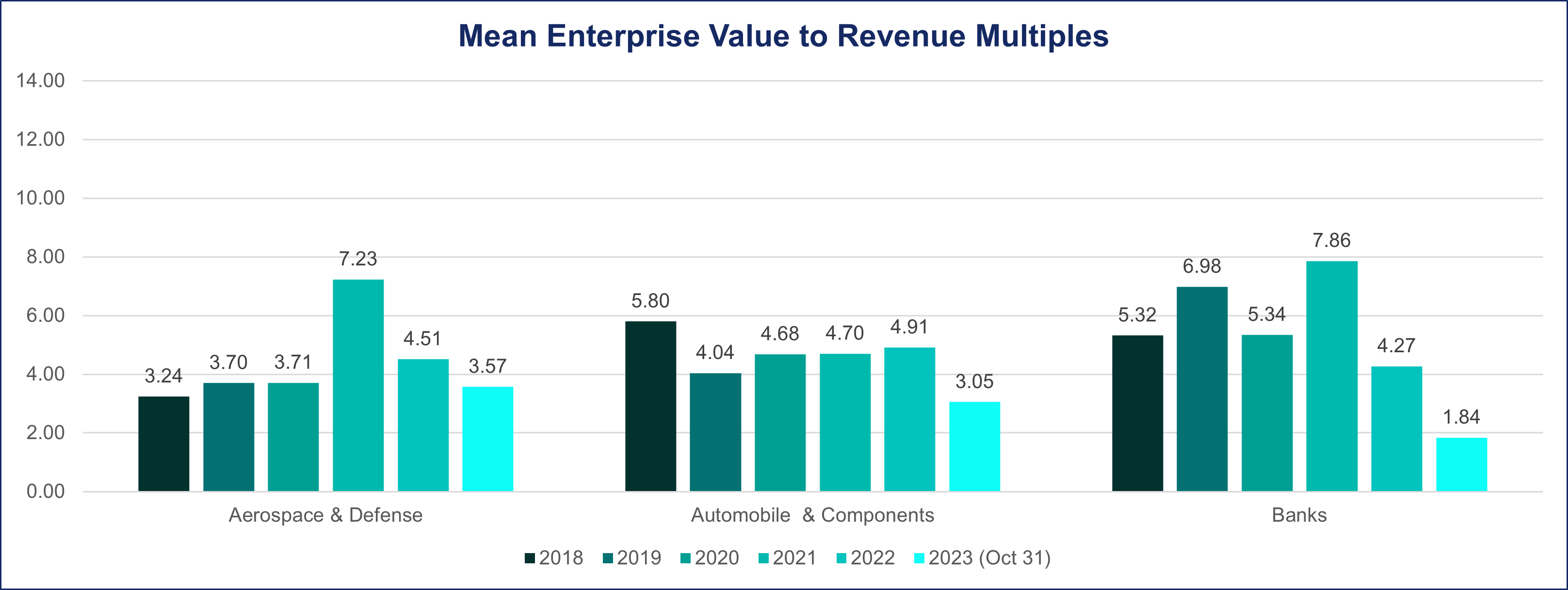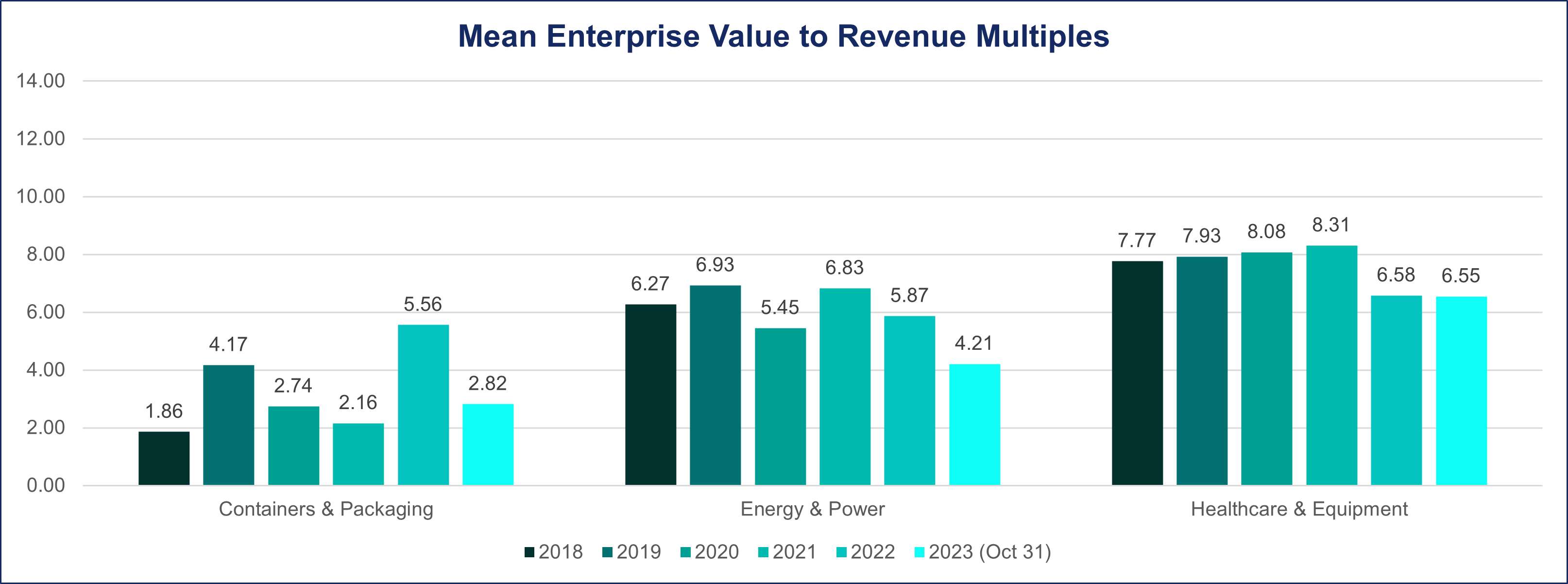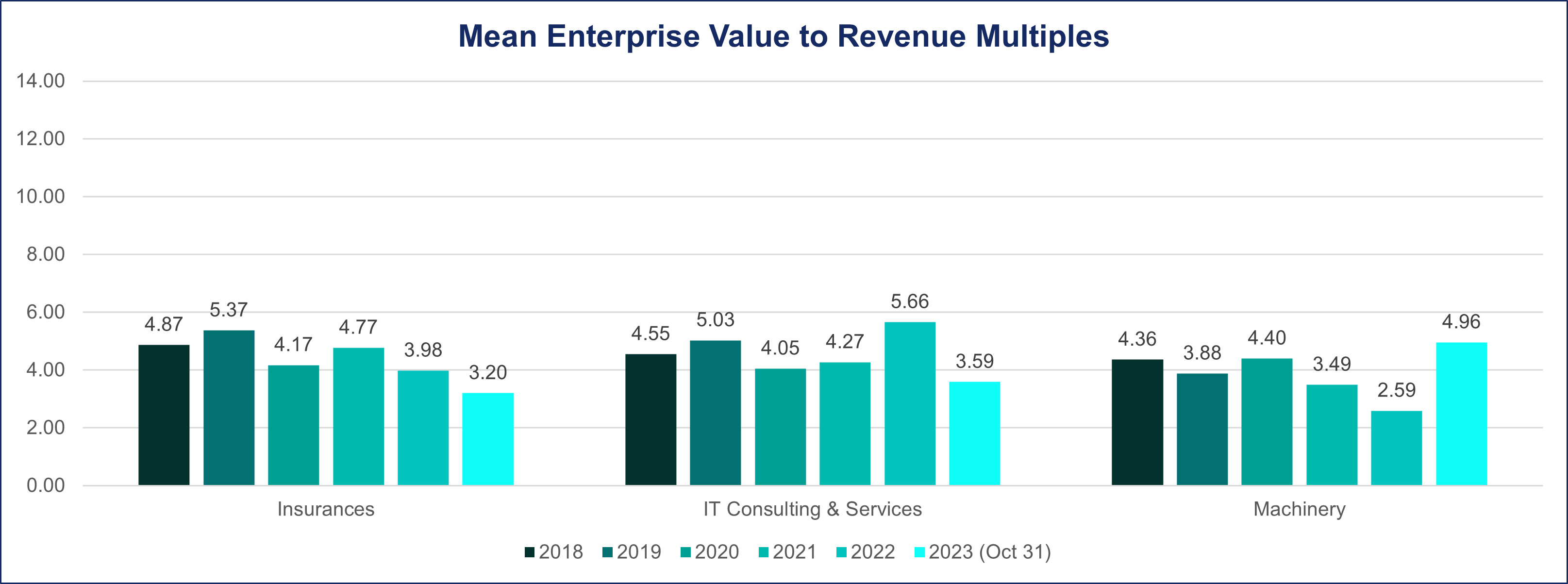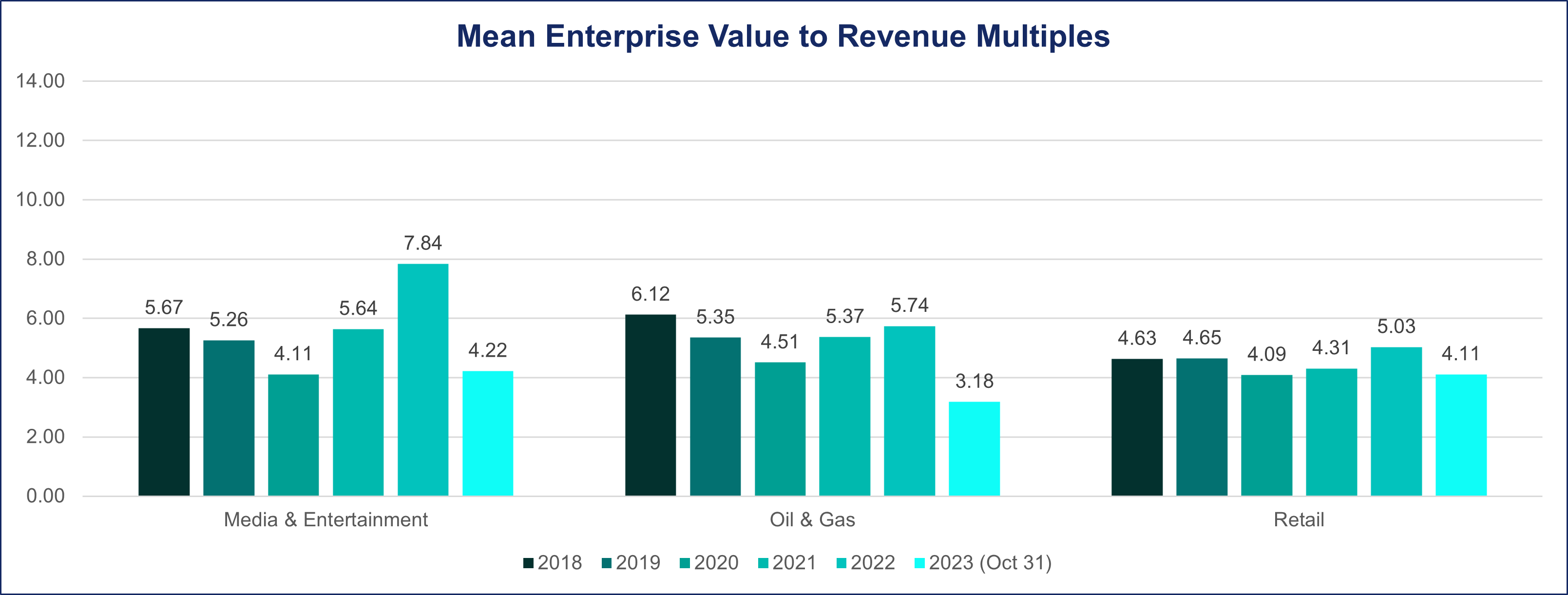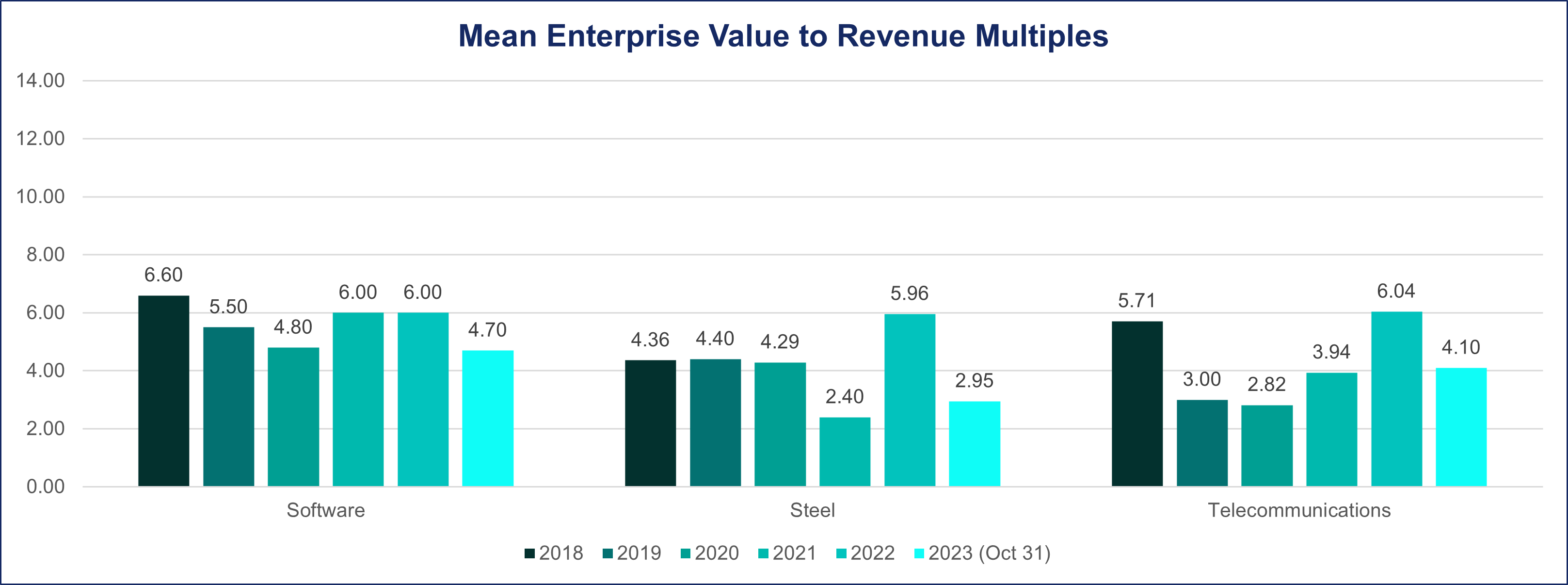
Blog Thriving in Turbulence? M&A Valuations in the Age of High Interest Rates
- Blog
Thriving in Turbulence? M&A Valuations in the Age of High Interest Rates

SHARE:
In this comprehensive report, we delve into the valuation dynamics of 18 diverse industries over the last six years, specifically focusing on the periods pre-pandemic, during the pandemic, and post-pandemic (2018 to October 31, 2023).
Overview
Our analysis employs two key valuation multiples: Enterprise Value to Earnings Before Interest, Taxes, Depreciation, and Amortization (EV/EBITDA) and Enterprise Value to Revenue (EV/Revenue). The goal is to provide a nuanced understanding of how industries have reacted and evolved in terms of deal multiples during these distinct economic phases.
EV/EBITDA and EV/Revenue Report
Our report covers 18 diverse industries, capturing the nuances of their valuation dynamics. The industries are as follows:
- Aerospace & Defense
- Automobile & Components
- Banks
- Biotech & Pharma
- Chemicals
- Consumer Products & Services
- Containers & Packaging
- Energy & Power
- Healthcare & Equipment
- Insurances
- IT Consulting & Services
- Machinery
- Media & Entertainment
- Oil & Gas
- Retail
- Software
- Steel
- Telecommunications
The analysis includes both median and mean deal multiples based on EV/EBITDA and EV/Revenue. The following charts and insights aim to elucidate how these industries responded to the challenges and opportunities presented in the pre-pandemic, during-pandemic, and post-pandemic periods.
Median Enterprise Value to EBITDA Multiples
by Industry – Overview
Median Enterprise Value to Revenue Multiples
by Industry – Overview
Mean Enterprise Value to EBITDA Multiples
by Industry – Overview
Mean Enterprise Value to Revenue Multiples
by Industry – Overview
To view the detailed charts per industry, click the thumbnails below:
As industries navigated through the evolving economic landscape of the last six years, the choice of valuation metric played a pivotal role in shaping deal multiples. This report aims to provide valuable insights for industry stakeholders, M&A professionals, and investors seeking a nuanced understanding of industry-specific valuation trends.
Valuation Metrics Overview
1. EV/EBITDA: Unveiling Profitability Dynamics
Definition: EV/EBITDA represents the ratio of a company’s Enterprise Value to its Earnings Before Interest, Taxes, Depreciation, and Amortization. It is a metric emphasizing profitability and operating efficiency.
Enterprise Value-to-EBITDA (EV/EBITDA):
EV/EBIDTA =
Enterprise Value
EBITDA
Where:
- Enterprise Value is the total value of a company’s equity and debt.
- EBITDA stands for Earnings Before Interest, Taxes, Depreciation, and Amortization.
Applicability:
- Often preferred for mature companies with established profitability.
- Provides insights into a company’s operational performance, excluding non-operating expenses.
2. EV/Revenue: Unmasking Revenue-Centric Insights
Definition: EV/Revenue signifies the ratio of Enterprise Value to a company’s Revenue. This metric focuses on a company’s ability to generate revenue, irrespective of profitability.
Enterprise Value-to-Revenue (EV/R):
EV/R =
Enterprise Value
Revenue
Where:
- Enterprise Value is the total value of a company’s equity and debt.
- Revenue is the total income generated by the company from its primary operations.
Applicability:
- Particularly relevant for high-growth or early-stage companies.
- Emphasizes top-line growth and market presence.
- Industry-Specific Analysis
- In situations where a company is going through a downturn and is valued based on Forward Multiples (see next section).
Forward EV/Revenue and Forward EV/EBIDTA:
Forward EV / Revenue =
Estimated Enterprise Value
Estimated Revenue for the Next Year
Forward EV / EBITDA =
Estimated Enterprise Value
Estimated EBITDA for the Next Year


Stay up to date with M&A news!
Subscribe to our newsletter
